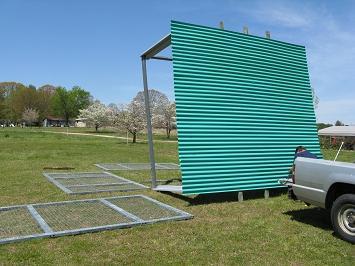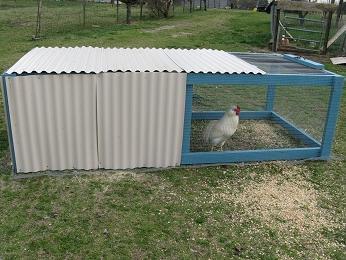Corrugated metal roofing is *quite good* vs windload IF INSTALLED CORRECTLY. That means having proper-sized properly-spaced purlins; having all the wood parts of the structure strongly tied together; using proper-length rubber-gasketed roofing SCREWS, put in at the proper spacing not skipping ribs; and (this is often the cause of roof failure) do NOT have more unsupported overhang than the mfr specifies you can, usually on the order of a couple inches max for metal roofing or a fraction of an inch for plastic roofing.
The plastic stuff is ok up to a point -- the cheaper pvc stuff (Palruf etc) is not recommended for as high loads as the polycarbonate (Suntuf etc) is. You need to screw every rib in high-wind areas, and you MUST use the foam or wood filler strips that go under them, since to prevent leaks and rot you have to screw plastic through the tops of the ribs and it will compress and collapse if you do not have that filler strip under each line of screws. IT does not crack when screwed in because you are predrilling all the holes slightly larger than the screws to allow fo thermal movement. (Well actually it does not crack even if you do *not* predrill, as I have done occasionally on little scraps, but DO NOT DO THIS for your roof as it voids the warranty and is likely to cause buckling under hot or cold conditions)
Good luck, have fun,
Pat
The plastic stuff is ok up to a point -- the cheaper pvc stuff (Palruf etc) is not recommended for as high loads as the polycarbonate (Suntuf etc) is. You need to screw every rib in high-wind areas, and you MUST use the foam or wood filler strips that go under them, since to prevent leaks and rot you have to screw plastic through the tops of the ribs and it will compress and collapse if you do not have that filler strip under each line of screws. IT does not crack when screwed in because you are predrilling all the holes slightly larger than the screws to allow fo thermal movement. (Well actually it does not crack even if you do *not* predrill, as I have done occasionally on little scraps, but DO NOT DO THIS for your roof as it voids the warranty and is likely to cause buckling under hot or cold conditions)
Good luck, have fun,
Pat



